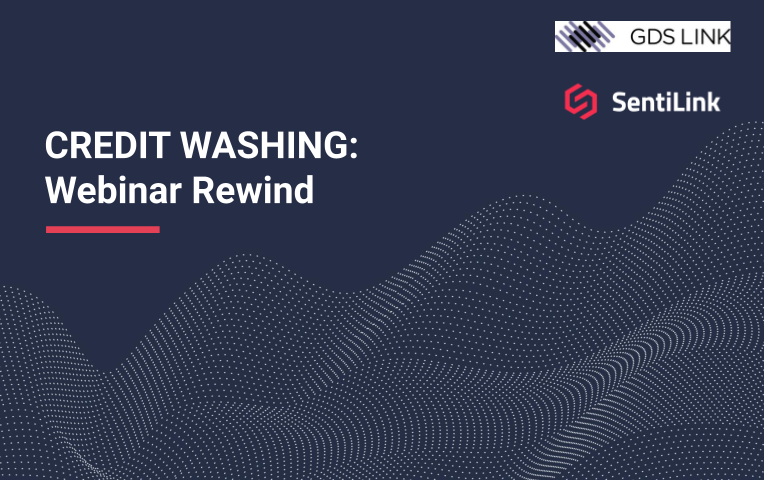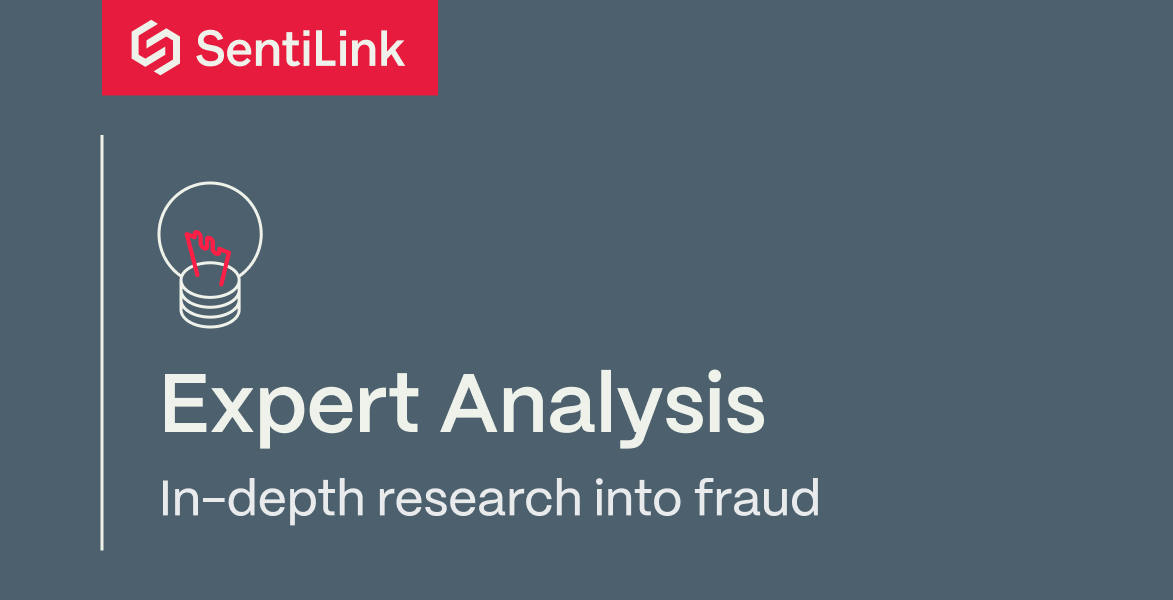Blog post
Credit Washing Webinar Rewind
SentiLink
Published
February 23, 2021

Our expert panel provided many great insights on credit washing at last week's webinar co-sponsored with GDS Link.
As a reminder, credit washing is a form of first party fraud where an individual removes derogatory information from their credit report by lying about being the victim of identity theft. After doing so, their credit score can jump 200-300 points, so they can then trick lenders into issuing them credit that the lender never would have provided to somebody with as many missed payments, charge-offs, or other negative information.
During the webinar, the panel agreed that the incidence of credit washing has gone up significantly in recent years and is a growing risk issue facing financial institutions.
Several factors have lead to this increase:
- The rise in synthetic identities - There's an overlap between those who commit synthetic fraud and those who engage in credit washing.
- More consumer friendly regulations - It's easier for fraudsters to reap the benefits of credit washing. For example, credit reporting agencies are required to purge or suspend tradelines while ID theft is being investigated during which time fraudsters can apply for more loans.
- Less information required to submit a dispute - It is no longer required to file a police report when disputing tradelines.
The impact on financial institutions of the increase in credit washing is significant:
- Higher costs - To handle the increased workload related to processing disputes, many financial institutions are adding staff or creating entirely new teams to meet their rising obligations.
- Increased chargeoffs - Many risk decisions are made for the wrong reasons with the wrong data. A consumer whose true FICO is a 500 could look like a 750 because everything that drove down their FICO score is suddenly missing after credit washing.
- Elevated risk - Ultimately, credit washing undermines a lender's underwriting and credit scoring framework.
A few recommendations were shared for lenders to reduce the risk from credit washing:
- Compare the number of tradelines over time if possible. For repeat borrowers, comparing the previous credit report to the current credit report is advised to see if the number of tradelines has decreased over time. Credit washers often dispute multiple tradelines at once so this change in number of tradelines can be large.
- Monitor specific behaviors associated with credit washers. If someone is using a disproportionate number of authorized user tradelines, has an extended victim alert on their credit report and is using some sort of credit boost product, they are more likely to have engaged in credit washing.
The full webinar can be viewed here.
Related Content

Blog article
April 3, 2024
Tips from a Fraud Fighter for Spotting Assumed Identity Abuse
Read article
Blog article
February 29, 2024
Reducing Complexity in Model Risk Management with Attributes
Read article
Blog article
January 18, 2024